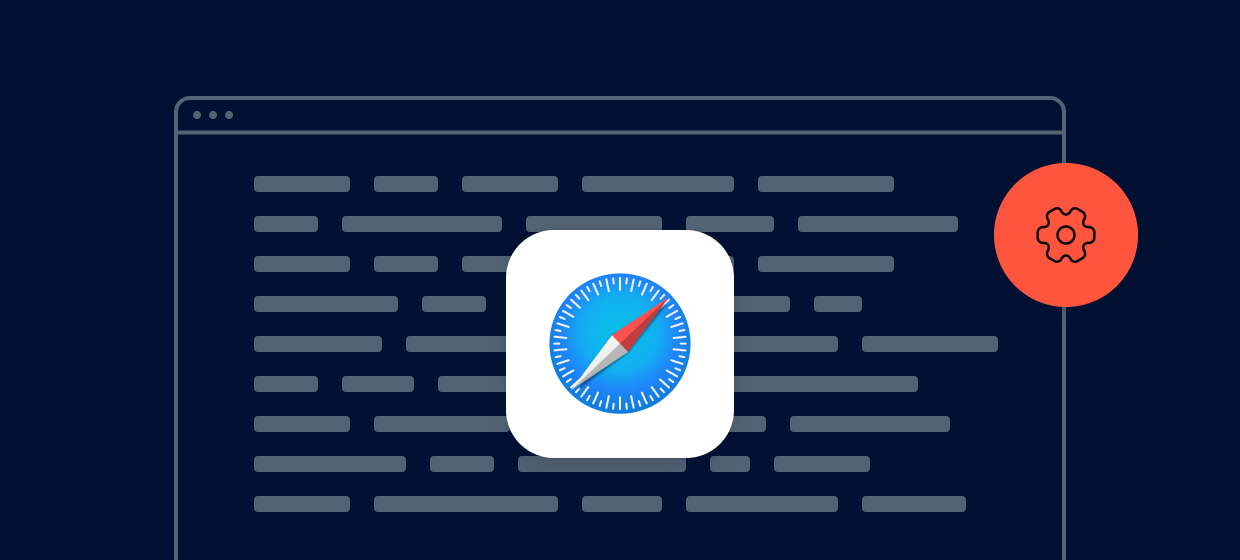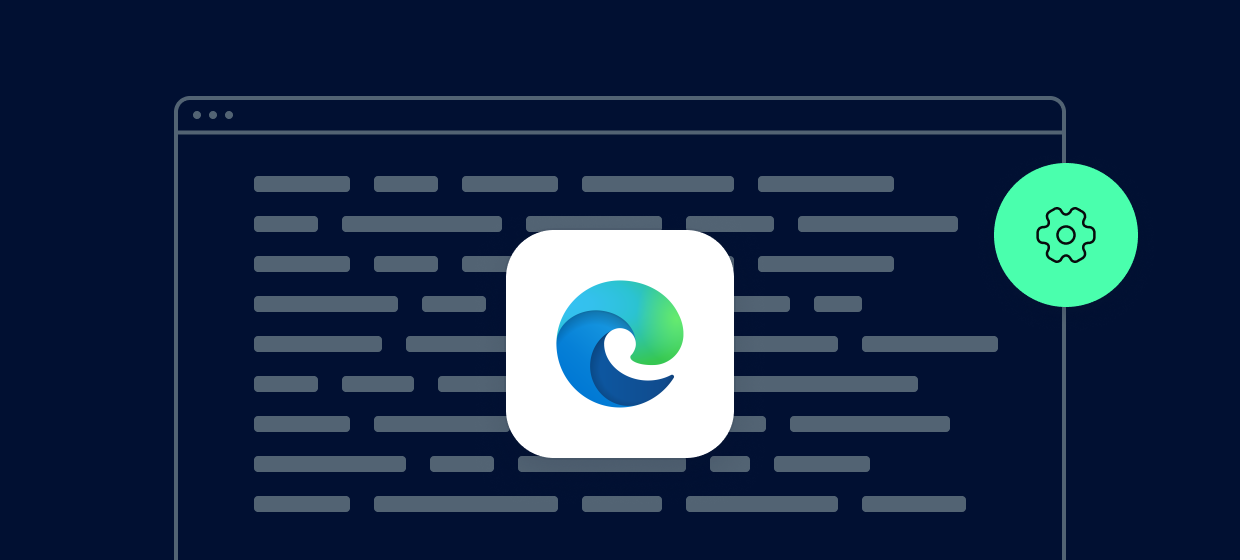You just tried to log into your favorite forum, and - bam! - you’re hit with a dreaded message: Your IP has been banned. Maybe you posted too quickly, triggered an automatic filter, or got caught in a blanket ban. Whatever the reason, you’re now locked out. You'd want to know how to bypass IP ban. But you do not need to worry - there are ways around it.
IP bans happen when websites block a specific Internet Protocol (IP) address from accessing their content. This could be due to excessive login attempts, violating platform rules, or even just being in a restricted region. Fortunately, bypassing an IP ban isn’t as complicated as it sounds. There are ways to get around it.
By using tools like VPNs, proxies, or the Tor browser, you can mask your IP and regain access. Even something as simple as restarting your router or switching to mobile data can do the trick in some cases. In this step-by-step guide, we’ll explore the most effective ways to bypass an IP ban and get you back online without hassle.
What is an IP Ban and Why Does It Happen?
An IP ban occurs when a website or online service blocks a specific IP address, preventing access to its content. This restriction applies to all devices using the same internet connection, making it difficult to regain access without intervention.
Why Do Websites Ban IP Addresses?
Websites enforce IP bans for several reasons, including:
- Security concerns: To prevent hacking attempts, DDoS attacks, or suspicious activity.
- Spam prevention: Online forums and social media sites block users who post excessive messages or violate community guidelines.
- Regional restrictions: Streaming platforms limit access to content based on location.
- Cheating prevention: Gaming services ban players caught using unfair advantages.
- Misuse by previous users: If your internet service provider assigns you a real IP address that was previously flagged, you could get banned without doing anything wrong.
Common Scenarios Where Users Face IP Bans
- Gaming services banning players for breaking in-game rules or exploiting bugs.
- Online forums restricting access due to spam detection or rule violations.
- Streaming platforms blocking viewers from accessing content outside their allowed regions.
- Workplaces, schools, or public networks getting banned because multiple users share the same IP address.
Some websites even ban entire IP ranges, affecting innocent users. To avoid future IP bans, many people use virtual private networks or proxy servers to switch to a different IP address. Those with a dynamic IP address may also be able to lift the ban by simply restarting their router.
Common Methods to Bypass an IP Ban
If you find yourself blocked by an IP ban, there are several ways to get around it. Since most bans are tied to a specific IP address, the key to regaining access is to switch to a new IP address or route your traffic through a different network. Depending on your situation, some methods may work better than others.
One of the simplest ways to bypass an IP ban is by changing your internet connection. Switching from Wi-Fi to mobile data or connecting to a different network will assign you a new IP address, allowing you to access the blocked website. Another effective approach is using a virtual private network (VPN), which masks your real IP address and replaces it with one from a different region.
For users with a dynamic IP address, restarting the router may be enough to obtain a new IP address from their internet provider. If that doesn’t work, proxy servers offer another alternative by rerouting your connection through a third-party server, making it appear as though you’re browsing from a different IP address.
Each of these methods has its own advantages, depending on why the ban was issued and how strict the website’s restrictions are. In the next sections, we’ll dive deeper into these solutions and how to use them effectively.
Using Proxies to Bypass IP Bans
One of the most effective ways to avoid IP bans is by using proxy servers. A proxy acts as an intermediary between your device and the website you're trying to access, masking your media access control details and replacing your IP address with one from a different location. This makes it appear as though you're browsing from another network, helping you gain access to sites that have blocked you.
Types of Proxies
There are several types of proxies, each with its own strengths:
- Residential Proxies: These proxies use real IPs assigned by internet service providers (ISPs), making them appear as legitimate home connections. Because they mimic real users, they are less likely to be detected and are ideal for bypassing strict bans.
- Datacenter Proxies: These are fast and widely available but don’t originate from ISPs, making them easier for websites to detect. They work well for general browsing but may not be the best for highly restrictive sites.
- Mobile Proxies: These use mobile data connections to route traffic through real mobile devices, making them extremely effective at evading detection. They are particularly useful for apps and platforms that heavily monitor user activity.
Choosing a Reliable Proxy Provider
Not all proxies are created equal, and free proxies often come with security risks and unreliable performance. To ensure a smooth experience, it's best to use a reliable proxy provider like Proxy-Cheap, which offers residential proxies, data center proxies, and mobile data connections — plus IPv4 proxies — that help users bypass bans without getting flagged.
By selecting the right proxy type and provider, you can easily gain access to restricted content and continue browsing without disruptions.
Using a VPN to Change Your IP Address
A VPN service is one of the most reliable ways to bypass an IP ban. A VPN (Virtual Private Network) routes your IP address through a secure server in a different location, masking your real identity and providing you with a fresh IP address. Unlike proxy servers, which only reroute specific traffic, a VPN encrypts all your internet activity, making it nearly impossible for websites to track or restrict you.
How VPNs Help Bypass IP Bans?
When a website enforces IP address blocking, it prevents any device using that IP from accessing its content. A VPN helps by assigning you a fresh IP address from another region, making it appear as though you're connecting from a completely different network. This is particularly useful for streaming services, gaming platforms, and forums that have strict ban policies.
Additionally, some VPNs allow users to change their MAC address, further reducing the chances of detection. By generating a new MAC address, you can make your device appear as an entirely different machine, adding another layer of anonymity.
VPNs vs. Proxy Servers
While both VPNs and proxy servers can help avoid IP bans, VPNs offer extra benefits:
- Full Encryption: VPNs encrypt your entire connection, protecting your data from hackers and surveillance.
- More Reliable: Unlike some proxy servers, VPNs are harder for websites to detect and block.
- Bypasses More Restrictions: VPNs work well for sites that track both IP address and MAC address information.
However, VPNs may slightly reduce connection speed due to encryption, and premium VPN services usually require a subscription. Despite this, a good VPN remains one of the most effective and secure ways to regain access to blocked content.
Using Tor for Anonymity
The Tor browser is another option for bypassing IP bans, especially when privacy is a concern. Tor (The Onion Router) works by routing your internet traffic through multiple volunteer-operated servers, encrypting your data at every step. This makes it nearly impossible for websites to track your network address or determine your real location.
How Tor Helps in Bypassing IP Bans?
When you connect to a website using the Tor browser, your request is bounced through different nodes worldwide before reaching its destination. This process hides your physical address and assigns you a new, randomized network address, helping you regain access to restricted sites. Unlike VPNs or Microsoft networks, which might still reveal some identifying details, Tor offers a high level of anonymity.
Pros and Cons of Using Tor
Pros:
- Provides complete anonymity, making it harder for websites to track users.
- Free to use with no subscription costs.
- Works well for users in heavily restricted regions.
Cons:
- Slower than VPNs due to multi-layered encryption.
- Not ideal for streaming or gaming.
- Some websites block known Tor exit nodes, making access unreliable.
While Tor is a great tool for privacy-focused users, it’s not always the best solution for bypassing static IP bans, as some websites actively block Tor traffic. However, for those seeking anonymity alongside understanding IP bans, it remains a powerful option.
Resetting Your Router for a New IP Address
One of the simplest ways to bypass an IP ban is by restarting your router to obtain a new IP address. This method works because many internet service providers (ISPs) assign dynamic IPs that change when a connection resets. If your ban is tied to your IP reputation rather than your account, this can be a quick and easy fix.
When Does This Method Work?
- If your ISP uses dynamic IPs, restarting your router may assign you a fresh one.
- Useful for temporary bans imposed due to excessive traffic or suspicious activity.
- Works best when the ban is IP-based and not linked to an account or data collection methods.
However, if your ISP assigns static IPs, this method won’t work. In such cases, you may need to request a new IP from your provider or use proxy servers or a VPN instead.
How to Reset Your Router for a New IP Address?
- Turn Off Your Router: Unplug it from the power source and wait for at least 10–15 minutes. Some ISPs require longer, so waiting a few hours can increase your chances of getting a new IP.
- Change Your MAC Address (Optional): Some ISPs link your IP to your MAC address. If possible, manually assigning a new MAC address in your router settings may force your ISP to issue a different IP.
- Reconnect and Check Your IP: Turn your router back on and reconnect to the internet. You can verify if your IP has changed by checking an IP lookup service.
- Try a Longer Downtime: If you still have the same IP, try turning off your router overnight before reconnecting.
Since most websites rely on IP-based blocking, this simple trick can often help users regain access. However, for stricter bans involving network security measures, alternative solutions like VPNs or proxies may be necessary.
Using Mobile Data as an Alternative IP
Switching to mobile data is one of the quickest ways to bypass an IP ban. Mobile networks assign dynamic IPs that rotate frequently, making them much harder for websites to track and block. If you're facing a simple IP ban, turning off Wi-Fi and using your mobile carrier's data can instantly provide you with a new IP address.
When is This Method Useful?
- For Temporary Bans: If your IP ban is due to automated security filters, mobile data can help you maintain access until the ban lifts.
- For Quick Access: Unlike configuring a VPN service or proxy service, switching to mobile data is instant and requires no setup.
- For Enhanced Anonymity: Since mobile IPs rotate often and are shared among many users, they make it harder for websites to track your activity or enforce long-term bans.
How to Switch to Mobile Data?
- Turn Off Wi-Fi: Open your device’s network settings and disconnect from your current internet connection.
- Enable Mobile Data: Activate your cellular data connection to get assigned a fresh IP.
- Check Your IP: Use an IP-checking website to confirm that your address has changed.
- Reconnect as Needed: If the site bans your new IP, toggling airplane mode on and off can force your carrier to assign another one.
While this method is simple and effective, it’s not ideal for heavy browsing or streaming due to potential data limits. For long-term solutiowitching to mobile data is one of the quickest ways to bypass an IP ban. Mobile networks assign dynamic IPs that rotate frequently, making them much harder for websites to track and block. If you're facing a simple IP ban, turning off Wi-Fi and using your mobile carrier's data can instantly provide you with a new IP address.
Risks and Legal Considerations When Bypassing IP Bans
While bypassing an IP ban can be effective, it’s important to understand the potential risks involved. Many websites enforce bans for security reasons, and attempting to regain access may violate their terms of service. In some cases, bypassing restrictions can even have legal consequences, depending on your server location and local regulations.
Violating Terms of Service
Most platforms, including streaming services, gaming networks, and online forums, have strict rules against bypassing bans. If a target website detects that you’re using a VPN or proxy to access restricted content, it may escalate the ban - blocking your account entirely instead of just your internet adapter or IP address.
Legal Issues in Certain Regions
While using a VPN or proxy is legal in most places, some countries heavily regulate or restrict their use. In regions with strict internet censorship laws, accessing banned content through alternative means could lead to penalties. It’s always a good idea to check local regulations before using these methods.
Security and Privacy Risks
Not all proxies, VPNs, or IP-changing methods are safe. Free services, in particular, may expose you to malicious activities, data theft, or tracking. Unreliable providers might log your browsing activity, putting your privacy at risk. Choosing a reputable VPN or proxy service helps minimize these dangers.
Potential Detection and Re-Banning
Even if you successfully bypass an error message and regain access, websites continuously update their security measures. If they detect unusual activity from your new connection, they may block your new IP or even flag your device. To reduce detection risks, use trusted methods and avoid excessive reconnections that might draw attention.
Understanding these risks allows you to make informed decisions and choose the safest, most reliable way to access restricted content.
Final Thoughts
Bypassing an IP ban is possible through various methods, from switching to mobile data and resetting your router to using proxy servers, VPNs, or the Tor browser. Each method has its pros and cons, and the best choice depends on your situation. If you need a quick fix for a simple IP ban, changing your internet connection or using mobile data might be enough. However, for long-term access and security, a VPN service or a reliable proxy provider is the smarter choice.
While these methods can help you regain access, it’s important to be mindful of website policies and potential security risks. Free or unreliable services may expose your data to malicious activities, so always opt for trusted providers when masking your IP address. Ultimately, choosing the right method ensures you can maintain access without compromising your privacy or security.
FAQs
What is Proxy-Cheap?
Proxy-Cheap is a proxy service provider for online anonymity and security.
What type of proxy solutions does Proxy-Cheap offer?
Proxy-Cheap offers residential, datacenter proxy solutions, and mobile proxy.
What IP versions does Proxy-Cheap support?
Proxy-Cheap supports IPv4 and IPv6 proxy versions.
What are the targeting options for our proxies?
Proxy-Cheap offers targeting options for specific countries.
What proxy connection protocols are supported?
Proxy-Cheap supports HTTP, HTTPS, and SOCKS proxy connection protocols.
Can I renew expired proxies?
Yes, you can renew expired proxies with Proxy-Cheap.
Can I choose proxy server locations?
Proxy-Cheap allows you to choose proxy server locations.
How easy is it to set up and manage proxies from Proxy Cheap?
Setting up and managing proxies with Proxy-Cheap is user-friendly.
How many concurrent sessions (threads) can be used?
The number of concurrent sessions varies based on your plan.
What are proxy authentication methods?
Proxy-Cheap offers various proxy authentication methods for user security.





















.svg)